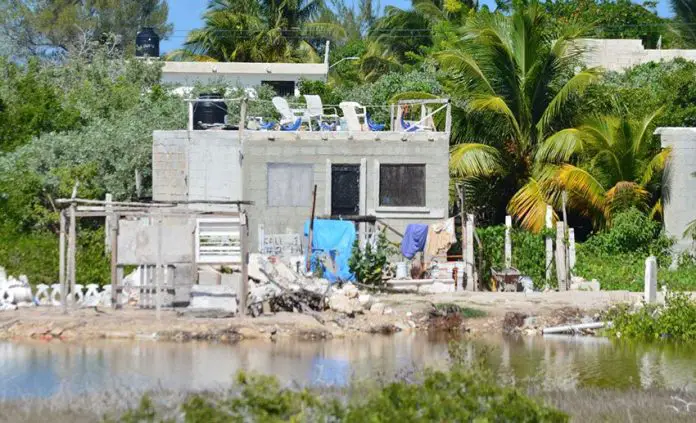The municipal government of Progreso, Yucatán, is seeking assistance from federal environmental authorities to halt illegal construction in protected mangrove swamps.
Some houses in Chicxulub Puerto, a community on the Gulf of Mexico eight kilometers east of Progreso, extend up to 50 meters into swamplands, according to municipal officials.
Jorge Enrique Aménica, ecology chief on the Progreso council, told the newspaper El Financiero that the local government has asked the federal Environmental Protection Agency (Profepa) to intervene to put an end to further irregular construction.
Efforts by municipal authorities have so far failed.
“We went there last week but they welcomed us by throwing stones at us,” Aménica said.
He explained that when the current municipal government took office in September, officials were unable to find any information that showed that approval had been granted to build on the swamplands.
“There are no permits to fill in the mangrove swamps or to pull out the mangroves,” Aménica said.
Houses that occupy part of the swamplands were built between 2015 and 2018 during the previous municipal administration, he said.
The mangrove swamps, located south of a thin strip of land on which Chicxulub Puerto is located, are part of a natural protected area established by the Yucatán government in 2010.
The decree that established the reserve specifies that land use in the area must be “compatible with the conservation of natural resources. . . avoiding the fragmentation of the landscape and the loss of habitat.”
But people already living in homes on the swamplands and those currently building new dwellings appear to be openly violating that regulation.
One Chicxulub resident told El Financiero that would-be swamp dwellers hire trucks to bring in rubble that is dumped into the water to provide a solid foundation on which to build.
Aménica said that a lot of the construction debris comes from building sites in places such as Telchac, a port town located about 40 kilometers to the east.
Jorge Herrera, a mangroves researcher with 30 years of experience, said the swamplands have already suffered a lot of environmental damage from the illegal construction and that restoring them will be costly.
“. . . Yes, they can be restored but each hectare will cost around 10 or 12 million pesos [US $500,000 to $600,000],” he said.
Source: El Financiero (sp)
